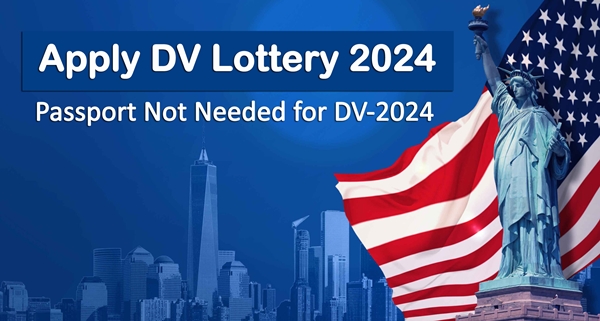
Before applying for a Canadian work visa, you need to apply for a Canada Work Permit. There are two main categories for work permits, namely, a Canada open work permit and an employer-specific work permit.
An open work permit will allow you to work for any Canadian employer while the employer-specific work permit will require you to work according to the information stipulated on your work permit, which will include your employment location and the duration of your permit.
You can also apply for the Canadian Post-Graduation Work Permit Program(PGWP). You are able to apply for this program on the open work permit, and this will allow you to gain experience as well.
If this interests you, read more about what the Canadian Post-Graduation Work Permit Program is.
Get to Canada in a flash with Express Entry
Regardless of the type of work permit you apply for, one thing that is great about being successful in your visa application and working in Canada is that you gain work experience.
There are many different ways to go about applying for permanent residency in Canada, but the best way to up your chances of getting your visa application approved is by taking the route that suits what you are looking for.
Like, if you are interested in immigrating to Canada for work, then a suitable visa program choice would be the Canadian Experience Class, which allows you to obtain permanent residency if you have experience working in Canada. The Canadian Experience Class is one of the programs offered in the Express Entry System.
Requirements for the Canadian Experience Class(CEC)
- 1 year of skilled work experience in Canada for a full-time position, or: 1 year of skilled work experience in Canada for a part-time position
- Legally obtained (employment) in Canada
- Job defined as level 0, A, or B by the Canadian National Occupational Classification
- No education requirement but you can increase your Express Entry score by obtaining a certificate, diploma, or degree from a Canadian institution, or: Complete a foreign credential, or: Getting an Educational Credential Assessment (ECA) which shows that your previous education meets Canadian standards
- You must take an approved language test for reading, writing, listening, and speaking
- You must meet the minimum language requirement of Canadian Language Benchmark 7 for jobs classified as 0 and A by the NOC or:
- Canadian Language Benchmark 5 for jobs classified as B by the NOC
- You must legally be allowed to enter Canada.
Sound like a good deal to you? Don’t miss out on that job opportunity. Get your visa application process started!
More Canada work permit options for employment purposes
Spousal Sponsorship from inside Canada
So what if you are an MBA graduate looking to work in Canada but you have a spouse and you would like to bring them with you? Canada values families and would like to help you keep your family together as you make your way here.
The Spousal Sponsorship program allows you to help your spouse or common-law partner to come and join you in Canada by sponsoring them.
If this sounds like a good option for you, then let’s take a look at how you can sponsor or be sponsored by your spouse to come to Canada:
In order to sponsor your spouse or common-law partner, you need to meet the following requirements:
- Be a Canadian citizen or:
- Be a permanent resident
- Live in Canada or:
- Plan to return to Canada once your spouse or partner achieves the permanent resident status
- Are able to financially provide for your spouse or partner for 3 years
If you are married and wish to sponsor or be sponsored by your spouse, you will need to present the following to immigration officers:
- Relation Information and Sponsorship Evaluation questionnaire Marriage certificate
- Wedding invitation and wedding photographs
- Birth certificates or adoption records if you have children with your spouse
- Proof of registration of marriage with a government authority
In addition, you will need to present at least two of the following documents:
- Copies of government issued Identity documents (IDs)
- Shared bank accounts
- Proof that you and your spouse own property together
- Tax forms that show that you and your spouse live at the same home address
If you are in a common-law relationship and are interested in sponsoring or being sponsored by your partner, you will need to present the following to immigration officers:
- Relation Information and Sponsorship Evaluation questionnaire
- Photographs of you and your partner that show that you are in a conjugal or marriage-like
- relationship
- Birth certificates or adoption records for any children you have with your partner
- Proof that you and your partner have lived together for at least 1 year
In addition, you will need to present at least two of the following:
- Documents that show that you and your partner recognize each other as common-law partners (documents such as employment or insurance benefits)
- Proof of expenses shared between you and your partner, or:
- Proof of financial support (if only one partner is employed and assumes financial responsibility)
- Proof that family and friends recognize your relationship (emails, letters, and social media count as proof)
- Family is very important to Canada, so the Spousal Sponsorship Program allows you to make it easier for your family to come and join you in this beautiful country.
The Bridging Open Canada Work permit
If you are working in Canada on a temporary work permit, and have applied for permanent residency, there will likely be a waiting period involved. But no need to worry, you can stay in Canada while you wait:
The Bridging Open Work Permit allows you to continue working in Canada, while you wait for the results of your permanent residence application.
Who is eligible for the Bridging Open Canada Work permit?
You are eligible for the Bridging Open Work permit if you applied to one of the following permanent residency programs:
- Permanent residence through an Express Entry program
- Provincial Nominee Program (PNP)
- Caring for Children Class or:
- Caring for People with High Medical Needs Class
- Home Child-Care Provider Pilot or Home Support Work Pilot Program
- Agri-Food Pilot Program
So there you have it. These various Canada work permit options make it possible for you to grab hold of some of Canada’s top job opportunities in the way that best suits you.




